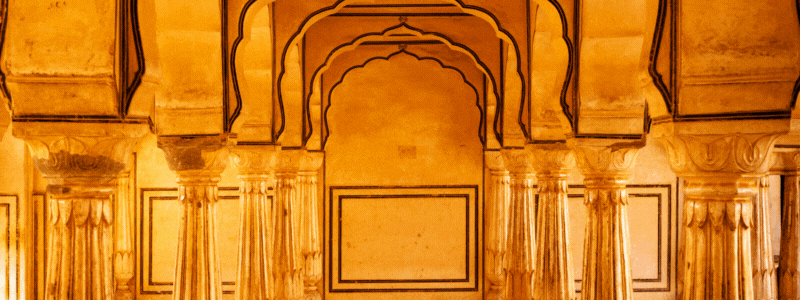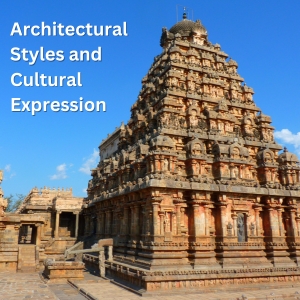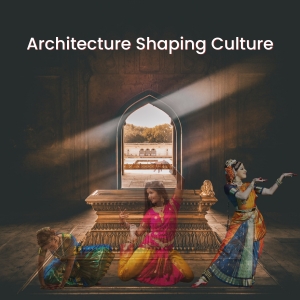Announcement
We are excited to announce the Indus Hackathon 2025, an exhilarating one-day event organized by the CSE Department of Indus University....Read more We are excited to announce the Indus Hackathon 2025, an exhilarating one-day event organized by the CSE Department of Indus University.
26th ISTE Faculty Annual State Convention will be held at Indus University on April 27, 2023....Read more 26th ISTE Faculty Annual State Convention will be held at Indus University on April 27, 2023.
26th ISTE GUJARAT STATE ANNUAL FACULTY CONVENTION & CONFERENCE ON APRIL 27,2023. MORE DETAILS WILL BE SHARED SOON....Read more 26th ISTE GUJARAT STATE ANNUAL FACULTY CONVENTION & CONFERENCE ON APRIL 27,2023. MORE DETAILS WILL BE SHARED SOON.
We are excited to announce the Indus Hackathon 2025, an exhilarating one-day event organized by the CSE Department of Indus University....Read more We are excited to announce the Indus Hackathon 2025, an exhilarating one-day event organized by the CSE Department of Indus University.
26th ISTE Faculty Annual State Convention will be held at Indus University on April 27, 2023....Read more 26th ISTE Faculty Annual State Convention will be held at Indus University on April 27, 2023.
26th ISTE GUJARAT STATE ANNUAL FACULTY CONVENTION & CONFERENCE ON APRIL 27,2023. MORE DETAILS WILL BE SHARED SOON....Read more 26th ISTE GUJARAT STATE ANNUAL FACULTY CONVENTION & CONFERENCE ON APRIL 27,2023. MORE DETAILS WILL BE SHARED SOON.

Architecture and culture are strongly intertwined since a society's planning and building of its structures reflects its values, beliefs, and ambitions. Architecture is both shaped by and a physical expression of culture. This historical connection between architecture and culture is evident in architectural plans, construction techniques, and spatial arrangements. The significant relationship between architecture and culture will be discussed in this essay, as well as any potential interactions between the two.
Religion-related meaning and symbolism. These splendid buildings, which functioned as pharaohs' tombs, reflect ancient Egyptian religion and their focus on the hereafter. The Great Pyramid of Giza and other Egyptian pyramids are prime examples of the close relationship between architecture and cultural identity. The pyramids symbolized the pharaoh's divine authority, power, and immortality.
Greek temples represent democracy and the quest for knowledge. Parthenon and other Greek temples symbolized ancient Greece's democratic values and pursuit of knowledge. These temples served as places of worship and hubs for academic and intelligence purposes. The accuracy and harmony of Greek temple architecture revealed the Greeks' respect for wisdom, proportion, and democracy.

Spirituality and the majesty of God. Gothic churches, like Notre Dame Cathedral in Paris, symbolized the spiritual aspirations and religious fervour of mediaeval Europe. They wanted to evoke awe and reverence with their tall spires, ornate stained glass windows, and lofty vaulted ceilings. Gothic architecture served as a monument to the strength of religion and a symbol of God's majesty.
The humanist movement and societal change. Architecture developed to express humanism, artistic innovation, and societal transformation during the Renaissance and Baroque eras. The resurgence of classical concepts and the exaltation of human potential were mirrored in structures like the Florence Cathedral and St. Peter's Basilica in Rome. These works of architecture were the epitome of proportion, beauty, and the quest for knowledge.
Assimilation of cultures and imperialism. Colonial architecture, such as the British colonial structures in India or the Spanish colonial systems in Latin America, showed how imperial powers influenced regional cultures. These structures created distinctive hybrid shapes by fusing local materials and craftsmanship with European architectural influences. The power dynamics, cultural absorption, and occasional resistance to colonization were mirrored in colonial architecture.
Social change and functionalism. Functionality, simplicity, and the social implications of design were stressed by modernist architecture, which is best exemplified by structures like the Villa Savoye by Le Corbusier or the Bauhaus School in Germany. This architectural trend was born in response to the industrialization and socioeconomic developments of the 20th century. Modernist designers aimed to produce effective, egalitarian environments that met the demands of a society that was changing quickly.

Balancing spirituality with nature. Indigenous architecture from all across the world shows a strong bond with the environment and spirituality. These buildings, which range from African mud huts to Native American longhouses, exhibit cultural ideals of sustainability, community, and deep reverence for the environment. Indigenous architecture frequently incorporates conventional building materials, methods, and decorative elements.
Sustainable practises and community values. The value of community, cooperation, and sustainable living is reflected in the rustic architecture found in farming towns and villages worldwide. Structures like barns, farmhouses, and public meeting areas support rural lifestyles and social cohesion. Vernacular building techniques and locally obtained materials are frequently used in rural architecture.
Geometric patterns and symbolism. Islamic architecture is characterized by intricate geometric patterns, calligraphy, and decorative embellishments, as seen in buildings like the Taj Mahal, India and the Alhambra in Spain. Islamic architectural designs, which stand for unity, transcendence, and the bond between humans and the divine, reflect the spiritual and cultural values of the Islamic faith.
Zen doctrine and harmony. Asian architecture aims for balance, peace, and a relationship with nature. Ideologies like Zen Buddhism, Taoism, and Feng Shui influence it. Buildings like Japanese temples, Chinese gardens, and Korean palaces are made to foster a meditative atmosphere. The interaction between people and the natural world is reflected in Asian architecture.
Neoclassicism and a resurgence of culture. Numerous movements and historical periods have influenced European architecture. For instance, Neoclassical architecture, which originated during the Age of Enlightenment, sought to restore the architectural features of Classical Greece and Rome. It stood for a return to humanism, reason, and the resurgence of classical culture. Gothic, Renaissance, Baroque, and Art Nouveau are just a few architectural styles that make up European architecture. Each represents a particular era of culture and history.
Cultural variety and globalization. The effects of globalization, technological development, and cultural diversity can be seen in contemporary architecture. Architectural designs frequently use sustainable practices, cutting-edge materials, and cutting-edge technologies to meet the demands of a globalized society. Modern architecture celebrates cultural diversity and makes places that cater to many cultures and promote Inclusivity.
Reflecting religious beliefs and practices. Temples, churches, mosques, and other areas of worship embody religious beliefs and practices. The design and layout of these spaces often reflect specific rituals, spiritual symbolism, and the relationship between worshippers and the divine. The architecture creates an atmosphere conducive to prayer, meditation, and communal worship.

Rituals surrounding death and commemoration. Funerary architecture, such as mausoleums, tombs, and memorials, reflects cultural traditions and beliefs surrounding death, mourning, and commemoration. These structures provide spaces for remembrance, honouring the deceased, and offering solace to the living. Funerary architecture varies across cultures, encompassing grand monuments, simple graveyards, and sacred sites.
Power Dynamics and social hierarchy. Palaces and castles, found in various cultures throughout history, represent power dynamics, social hierarchy, and the authority of rulers. The architecture of these structures often reflects the opulence and control of those in positions of authority. They serve as symbols of wealth, dominance, and the consolidation of power.
Family units and communal living. Residential architecture, including houses, apartments, and collective dwellings, reflects a society's values and social structures. The design and layout of homes accommodate family dynamics, privacy needs, and cultural norms. Residential architecture also influences community cohesion and social interactions within neighbourhoods.
Governance and public engagement. Civic buildings, such as town halls, government offices, and courthouses, are crucial in management and public engagement. The architecture of these buildings often aims to convey authority, transparency, and accessibility. They provide spaces for civic activities, public discourse, and the administration of justice, reflecting the values of democracy and public participation.
Preserving and showcasing heritage. Museums and cultural centres are art, history, and cultural heritage repositories. The architecture of these institutions often reflects the significance of their collections, blending functionality with aesthetics. They provide educational spaces, preservation, and celebration of diverse cultural identities.
Commemorating historical events and figures. Monuments and memorials commemorate significant historical events, individuals, or collective experiences. The design and placement of these structures evoke emotions, preserve collective memory, and shape cultural narratives. Monuments and memorials can symbolize identity, resilience, and history lessons.
Encouraging social interaction and Inclusivity. Urban design, including the layout of streets, parks, and public plazas, influences social interaction, community engagement, and a sense of belonging. Thoughtful urban planning can foster Inclusivity, create gathering spaces for diverse groups, and enhance the quality of urban life. Public spaces shape cultural interactions, reflecting the values of openness, connectivity, and civic pride.

Symbol of Paris and French identity. The Eiffel Tower has become an iconic Paris and French cultural identity symbol. This landmark represents innovation, engineering prowess, and the spirit of the industrial age. The Eiffel Tower has become inseparable from the image of Paris and has shaped the city's global reputation as a hub of art, fashion, and romance.
A cultural hub and national icon. The Sydney Opera House is not only an architectural marvel but also a cultural seat and national icon of Australia. Its distinctive sail-like design has become synonymous with Sydney's identity and the country's vibrant arts scene. The Sydney Opera House showcases the fusion of architecture, creativity, and cultural expression.
Revitalizing local economies and preserving culture. Architecture is vital in heritage tourism, attracting visitors and revitalizing local economies. Historic buildings, ancient ruins, and well-preserved architectural sites interest tourists in exploring cultural heritage. Heritage tourism contributes to preserving cultural identity, fosters local pride, and generates economic opportunities.
Attracting tourists and promoting city branding. Contemporary architectural landmarks, such as the Burj Khalifa in Dubai or the Guggenheim Museum in Bilbao, are designed to attract tourists and encourage city branding. These iconic structures become synonymous with their respective cities, contributing to global recognition and attracting visitors worldwide.
Addressing environmental concerns and promoting eco-friendly practices. Architecture has a crucial role in addressing environmental concerns and promoting sustainable practices. Sustainable design incorporates energy-efficient technologies, renewable materials, and green building strategies. By creating environmentally conscious structures, architects contribute to reducing carbon footprints and preserving natural resources.
Enhancing the Quality of Life and Well-being. Architectural design and urban planning influence the integration of green spaces, parks, and sustainable infrastructure within cities. Access to nature, well-designed public spaces, and walkable communities enhance the quality of life and contribute to the well-being of residents. By incorporating nature into the built environment, architecture promotes physical and mental health while fostering sustainable urban development.
The connection between architecture and culture is profound and multifaceted. Architecture physically represents cultural values, beliefs, and aspirations, while culture shapes buildings' forms, functions, and meanings. We understand how the built environment reflects and shapes societies by exploring historical perspectives, architectural styles, artistic expressions, and the reciprocal influence between architecture and culture. By recognizing and embracing this connection, architects and designers can create spaces that celebrate and promote cultural diversity, fostering a sense of identity, community, and shared heritage.